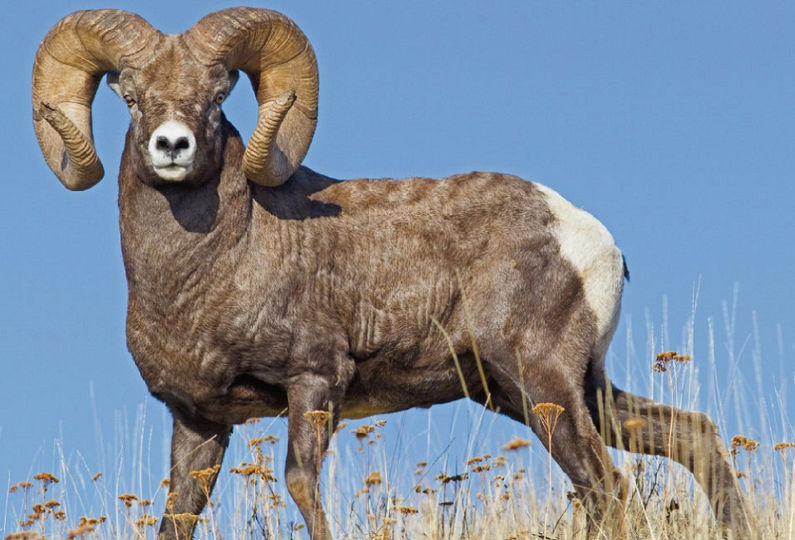top of page

Argali
NEAR THREATENED
21x24''
$1,111
The Argali are the largest living wild sheep & roam the highlands of western East Asia, the Himalayas, Tibet, and the Altai Mountains. Argali is a Mongolian word for “wild sheep.” Mature rams can stand 49 inches high at the shoulder and weigh more than 300 pounds. Horns are present in both sexes but are especially long in rams. The corkscrew-like horns are ridged and continue to grow throughout the sheep’s life. A mature male’s horns can reach lengths of over 4 feet, and females, though significantly smaller, can still reach lengths of 1.5 feet. Females weigh about one-third less than males. Like all sheep, argalis are highly social, though adult rams and ewes live in separate herds except during the brief mating season. Argalis are adapted to great cold, aridity, and very high elevations, as well as sudden rain and snowfalls. They occupy the most extreme habitats among wild sheep. Argali sheep can be found at upper elevations on steep slopes above 1000 meters, and they prefer to occupy the same areas for much of their lives. They are herbivorous creatures and feed mainly on grasses, herbs, and sedges..
The Argali is listed as Near Threatened because this species is believed to be in significant decline due to poaching and competition with livestock, likely exaggerated by the impact of ongoing climate change. The species was listed as endangered in 1976, but very few additional conservation measures have been implemented to preserve the species. This species is threatened throughout its entire range, but some subspecies are in a far worse situation than others. As the world's largest sheep, the lure to gather a trophy specimen is strong among sports-hunters. Poaching continues to be a major (and difficult to manage) problem, as they are hunted for both their meat and their horns, used in traditional Chinese medicine. Argali have been extirpated from northeastern China, southern Siberia, and parts of Mongolia. Populations of predators such as Himalayan wolves and snow leopards have appeared to have been negatively affected by the scarcity of argali. Also important are the impacts from local, nomadic pastoralists who displace argali, whose livestock feed on the same forage as argali, and whose dogs chase and even kill argali. More minor and localized threats include unsustainable trophy hunting and habitat loss resulting from rapidly increasing resource extraction (i.e., mining). Very little money from trophy hunting currently supports conservation activities.
Although protected from general hunting, in Mongolia trophy hunters can purchase hunting licenses. Under the Mongolian Hunting Fee Law of 1995, revenue generated from argali trophy hunting is divided among the federal government’s general funds (70%), the local province (20%), and the hunting organization (10%); specifically, $18,000 for argali trophies is allocated to local and federal governments. Though this money should benefit local people, government agencies, and help implement important conservation actions for argali and the ecosystems they inhabit, unfortunately, little of this money makes it back to local people or to the conservation of the species. Because local governments generally receive no additional revenue from trophy hunting, many local governments are actively establishing protected areas to prevent future hunting. ProPublica revealed that, in 2019, the government of Mongolia, retroactively, granted Donald Trump Jr. a hunting permit for the killing of an endangered Argali. The hunt and travel to Ulaanbaatar for a private meeting with Mongolian president was said to have cost US taxpayers over $75,000 for United States Secret Service protection. More than 125,000 animals are killed each year for trophies. That’s 342 per day. 14 animals every hour...
Jeff Flocken, president of Humane Society International, said, "Trophy hunting is unethical, ecologically devastating and inflicts tremendous cruelty on wild animals. It’s time that we move beyond a colonial pastime and celebrate wild animals in their natural environment.”
bottom of page


